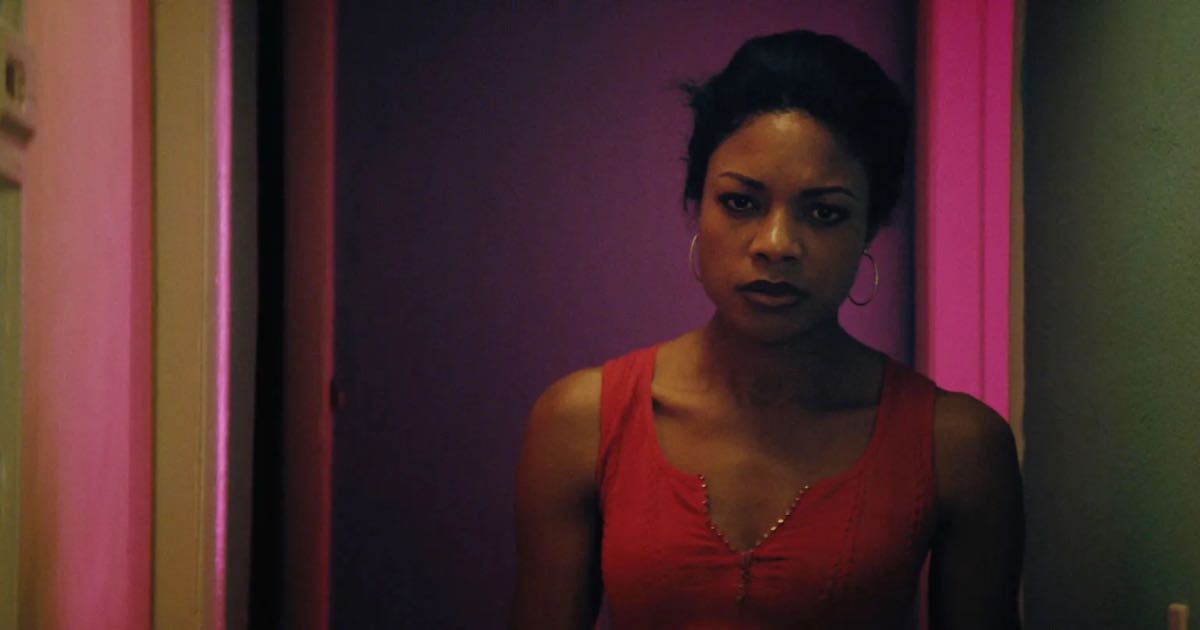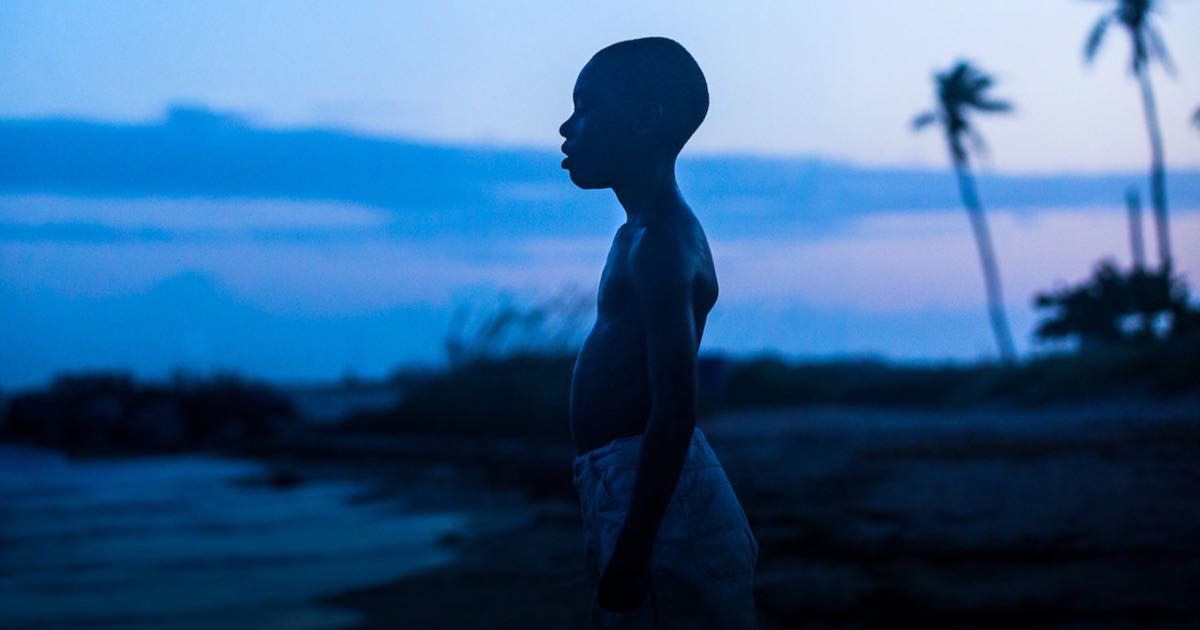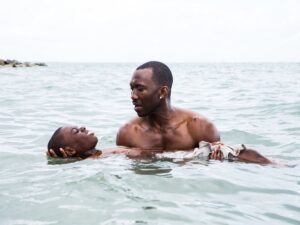Barry Jenkins’ Moonlight (2016) has rightfully earned its reputation as one of the most beautiful and sensitive coming-of-age stories on celluloid. The film, which was critically acclaimed for its fresh take on race, African-American queer sexuality, and nuanced understandings of masculinity was told through bold colors and realism in the mode of cinematography. Jenkins and cinematographer James Laxton focused on drawing the audience into the inner lives of the characters and creating a consistent visual language to tell a story of fractured identity. For their singular vision for storytelling, Moonlight famously won Best Picture at the 89th Academy Awards.
Let’s deep dive into some of the elements and cinematography techniques used in the film.
Subverting audience expectations
Moonlight is a story about seemingly contradictory things. While it’s a tender coming-of-age film, it never shies away from the harsh world of gangs and drug use that it is set in. Within its ambition to portray a higher, complicated understanding of black queerness and violence upon black bodies, it also acknowledges the ties of hegemonic masculinity in African American communities. Jenkins and Laxton were aware of the fact that they were dealing with stories that had previously been depicted, and sought to destabilize the tropes associated with several elements of the narrative.
When it comes to depicting the lives of African American communities on screen, there is a precedent set by films that have come before Moonlight. Sensitive topics such as race and sexuality, staged against the backdrop of the ‘hood’ are automatically assumed to follow the convention of realism. The assumption is that the story will be told in a tonality that prioritizes the gritty and bleak real-ism of their world.
Moonlight makes no such commitments. From the very first shot of drug dealer Juan (played by Mahershala Ali) arriving to meet with his subordinates, we are greeted with a bright color palette that is infused with rich blues, bright yellows and tropical reds. Right afterwards, as Juan sets up a drug deal, the camera swirls around the characters, establishing the neighborhood in a highly stylized setting before following the protagonist running across a field in a long take.
The idea of the opening sequence to have these two highly disparate shots welded together is the essence of the film. The choice to portray what looks like a stereotypical drug deal, and then swiftly move towards the vulnerability of Little/Chiron, as he is bullied serves to subvert audiences’ expectations and sets the right tone.
Laxton has said:
It’s sort of a fake-out. The scene is about a dealer interacting with his guy on the corner, right? Which is a scene I think we have seen. It’s a very familiar interaction. But the next cut is to a child running through tall grass, and handheld, somewhat frenetic camera movement.
Finding the right gaze
Moonlight’s focus on telling a well-realized story is evident in its camera movements as well. The film is driven by the internal conflicts of the characters, instead of a plot. To communicate this in a visual manner, the camera frames the subjects such that they fill up the majority of the screen, thus drawing us into their emotional landscapes. Laxton pushes the camera closer and closer towards the characters so as to create moments of intentional bonding between them and the audience. Without saying a lot, the film creates dramatic tension as well as a sense of intimacy that can so often get lost in the viewing process.
Let’s consider the sequence where Juan teaches Little to swim. The frame is set up in such a way that the viewer only experiences the calm waters of the Atlantic and the rush of the waves as Juan holds Little above the water. The effect is such that we are not watching them swimming; instead, we are right there next to them. The result is an immersive sequence that allows the camera to capture each splash and stroke of the water, which was achieved by filming partly underwater.
Similarly, the gaze of the film is such that the person behind the lens does not lend any moral judgement to the kind of life the characters find themselves in. Instead, the camera simply allows the audience to see them at their most humane moments — with their flaws and hopes laid bare. Some of the most impactful moments are relayed through stares. Paula’s anger at her son, Kevin and Chiron’s sexual intimacy and the resulting violence, as well as Chiron’s ultimate self-acceptance at the end of the film are relayed to us in silent gazes.

The last sequence particularly stands out; upon breaking down in Kevin’s arms, Chiron sees himself as Little, standing in front of the sea and looking right back at the viewer, awash in moonlight and hinting at self-acceptance. This also brings the film to a symbolic full circle, ending with the nascent stages of Chiron’s story. The non-linear storytelling is enhanced by the visual choices of the film. Bold, saturated colors and soft lighting that express the emotional beats of the film lend a touch of dream-like surrealism to the story.

Artistic Influences
Laxton and Jenkins drew from varied sources to create a singular cinematic language for Moonlight. The bold color palette and bold lighting choices, rife with lens flare that communicated the sweltering heat of Miami were inspired from the films of Wong Kar-Wai. The use of color in the film to provide context for emotional moments, and eye-catching lighting in an expressionistic mode can also be seen in films like Chungking Express (1994), and In the Mood for Love (2000). In both of these films, space and framing of the characters provide a coherent visual guide to the plot’s impact. Moonlight’s tripartite narrative and non-linear storytelling is also reminiscent of the latter.
Laxton was also heavily inspired by photography. He borrowed elements from the work of photographers Earlie Hudnall Jr and Viviane Sassen. Sassen’s work possesses a wonderful blend of color and the saturation of natural textures and hues of skin that Moonlight employs as well, to define a new idiom of beauty for black bodies in cinema. Similarly, the photographic realism of Hudnall Jr. results in the framing of the characters with a quiet dignity.

Similarly, the choice to shoot in 35 mm anamorphic lens was borne out of a desire to tell a story with majesty and an immersive experience. Jenkins and Laxton were of the opinion that since the widescreen ratio is automatically associated with franchise blockbusters, telling an intimate story of sexuality and belonging with the same dimensions would serve to create an atmosphere of total artistic unity.
Motifs
While the story is told in three distinct parts that correspond to different parts of Chiron’s identity as Little/Chiron/Black, these are united by the expressionistic use of color and certain motifs. The color blue and water are the most prominent throughout. Blue serves as a source of solace and peace for Chiron — Juan’s first introduction and their subsequent meeting are framed in the vivid blue of his car, and his apartment. Through his association with the color blue, Juan is introduced as a guardian, and a much-needed father- figure that has been missing from Chiron’s life.
But blue is also the color of identity, or rather, the symbol of the formation of an identity.
“In moonlight black boys look blue. You blue, that’s what I’m gon’ call you.”
Juan relays this anecdote to make Chiron understand that identity is often shaped by one’s circumstances, and people only see the person shaped by their lot in life, not who they truly are. In this aspect, blue becomes the motif of rebirth and a fragmented identity. This is where the association with water is relevant.
Jenkins approached the scene where Juan teaches Chiron to swim as a transcendental moment. The immersion in water is reminiscent of a baptism, and this motif is repeated throughout the film. At the end of the second part, Chiron has been beaten up and bloodied by his bullies. We see him immerse his face in an ice bath, framed by flickering lights. This visual rebirth consolidates his transformation from a scared and vulnerable teenager to an angry and resolute youth, who now performs hegemonic, violent masculinity in order to reclaim some semblance of power.

As the second part ends and the third begins, a grown-up Chiron, now called Black, dunks himself in an ice bath yet again, as if to erase all traces of his past scared self through this ritual and be reborn again as the powerful drug lord that he has grown into. But as the film ends, the final image is that of Little, barefoot on the beach, soaked in blue moonlight, these motifs merge to create one final image of healing.
Conclusion
Moonlight is a film of few words. Plot is not so much the concern as an intensive character study is. But the film is an absolute triumph on both counts for its vibrant storytelling. With rich hues that provide vital cues and swift camera movement, the film cautiously walks the line between realistic storytelling and a process of expressionist imagery. Every shot is rife with emotional heft and a definitive artistic composition. Laxton creates pure poetry on celluloid that is perfectly equipped to conjure a story of self-discovery and acceptance.

